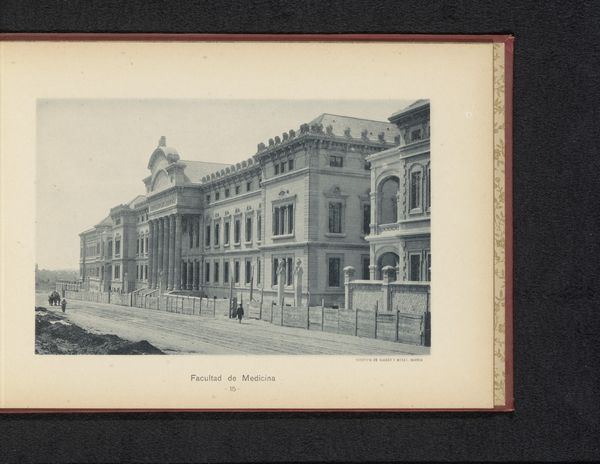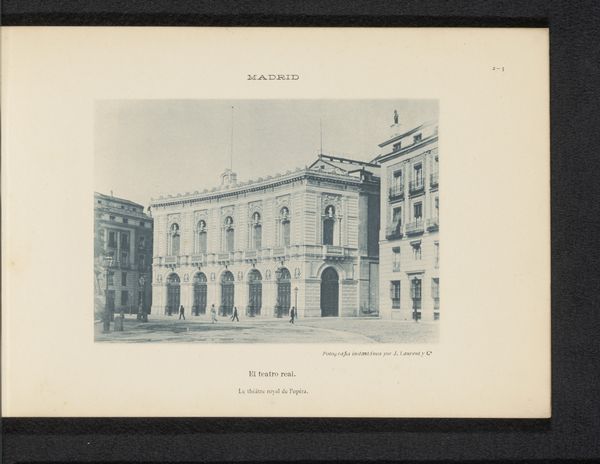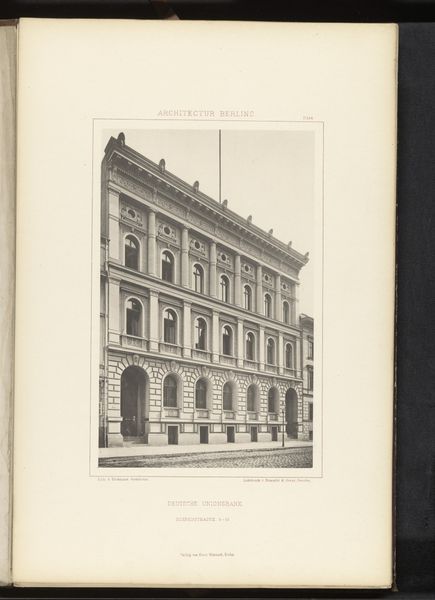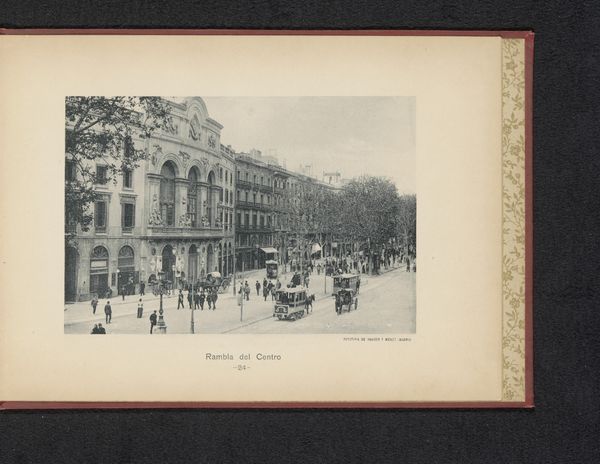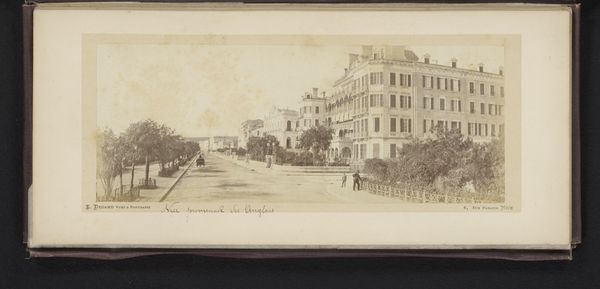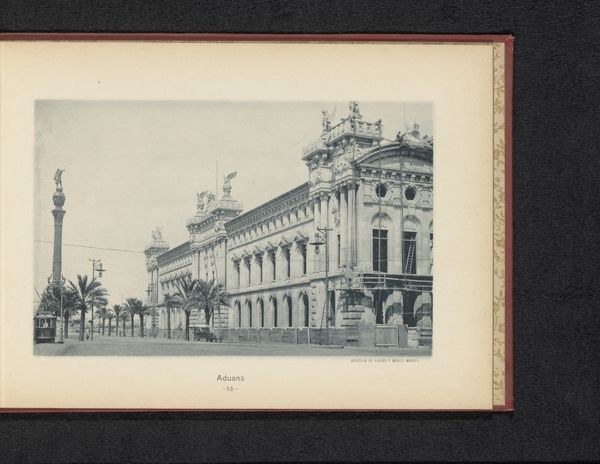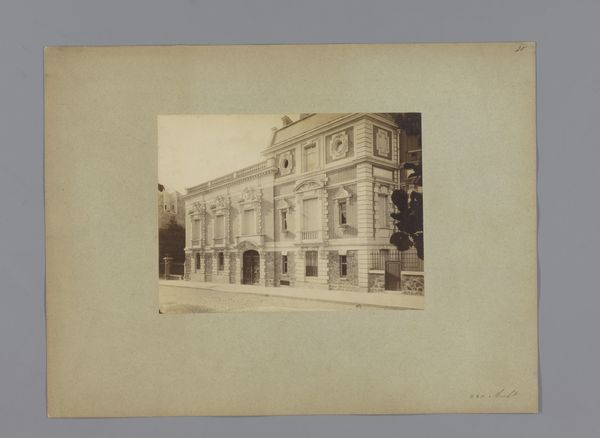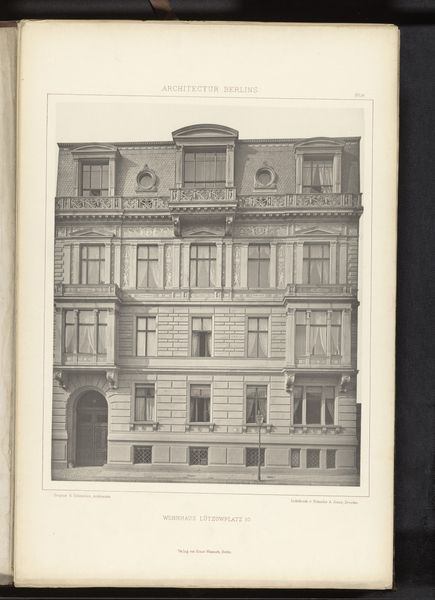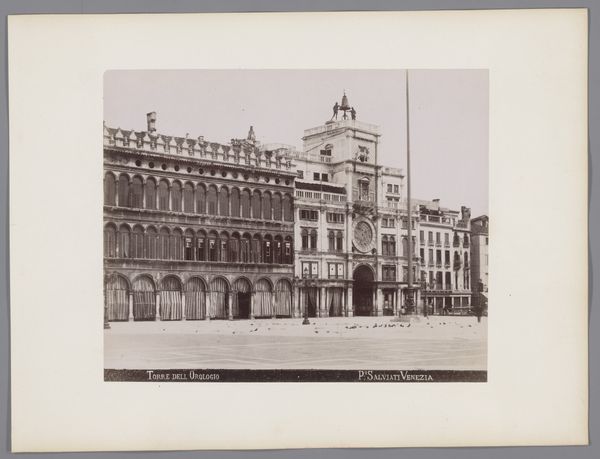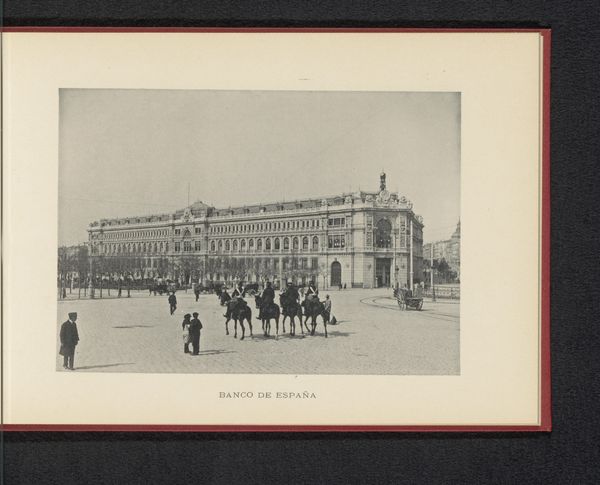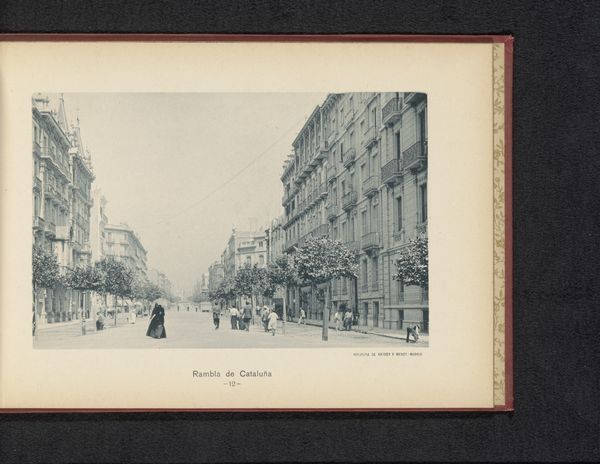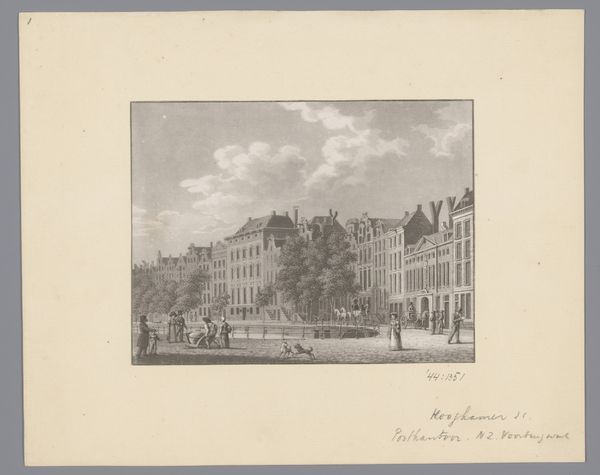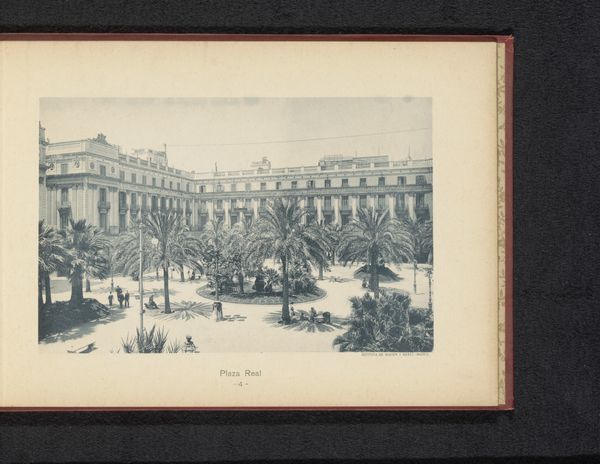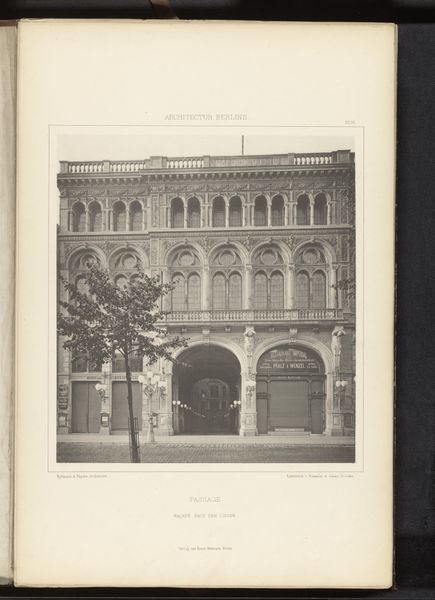
print, photography, albumen-print, architecture
# print
#
photography
#
cityscape
#
albumen-print
#
architecture
#
realism
Dimensions: height 110 mm, width 170 mm
Copyright: Rijks Museum: Open Domain
Curator: What a strikingly formal image! Before us we have “Gezicht op een jezuïetencollege in Barcelona,” which translates to “View of a Jesuit College in Barcelona,” taken sometime before 1890. It's an albumen print, credited to Hauser y Menet. What are your initial thoughts? Editor: Stark and precise. The receding lines of the architecture really draw your eye. The high contrast gives it an almost graphic quality despite the realistic details, with the lines of the building cutting across the softened form of the tree. Curator: The image encapsulates the late 19th century’s interest in documenting urban spaces and civic structures. Photography was booming and was harnessed as a tool for creating visual records of a rapidly transforming Barcelona. The Jesuit College held significant influence during that time and representing its grandeur through the then-novel medium of photography speaks volumes about its prominence. Editor: Definitely. Look at how the composition emphasizes verticality— the long facade, rows of windows, and even the lone tree beside the building, it all underscores the building’s commanding presence. The muted tones also lend a kind of solemnity to the place. Curator: I think this building embodies an era defined by increasing secularization in Spain. Despite this transformation, religious institutions still held great power and visibility within society. These kinds of photographs offered ways to reflect on that dynamic tension within the urban fabric. Editor: I'm also struck by the balance here. The positioning of the figures, although small, provides scale, and it cleverly pulls your gaze into the frame—the overall design seems carefully constructed to present a scene of dignified, stately composure. Curator: Indeed, that staged sense is a hallmark of many architectural photos of this period. They were rarely objective records, and frequently intended to present the building as an aspirational symbol for society. Editor: So, beyond being a visual document, this work then reflects on those very societal values through form, line, and calculated balance. Curator: Precisely! By analyzing the interplay between space, representation and societal structures, we start understanding the deeper implications this photograph presents.
Comments
No comments
Be the first to comment and join the conversation on the ultimate creative platform.
